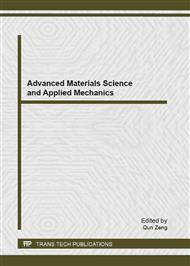p.119
p.123
p.128
p.135
p.140
p.145
p.149
p.154
p.159
Numerical Modeling of Galvanic Corrosion Behaviors on Uranium Surface
Abstract:
The Uranium and Titanium corrosion rates are described by a Tafel’s relationship, and the cathodic protection of Uranium is a function of a Wagner number. A numerical simulation of galvanic corrosion of Uranium surface under thin layer electrolyte is presented. The model considered that the effect of a circular defect and oxygen reduction and corrosion in the Uranium surface, the effect of electrolyte thickness and conductivity and defect radius on corrosion current distribution of Uranium with is investigated. The results shows that the corrosion rate at the center is non-uniform, and it could lead to the formation of a hemispherical-shaped pit. And the effect of radius is to increase the importance of the electrode kinetics relative to ohmic resistance, and to increase the potential difference between the center and edge of the Uranium surface, resulting in non-uniform corrosion current distribution.
Info:
Periodical:
Pages:
140-144
Citation:
Online since:
May 2013
Authors:
Price:
Сopyright:
© 2013 Trans Tech Publications Ltd. All Rights Reserved
Share:
Citation:


